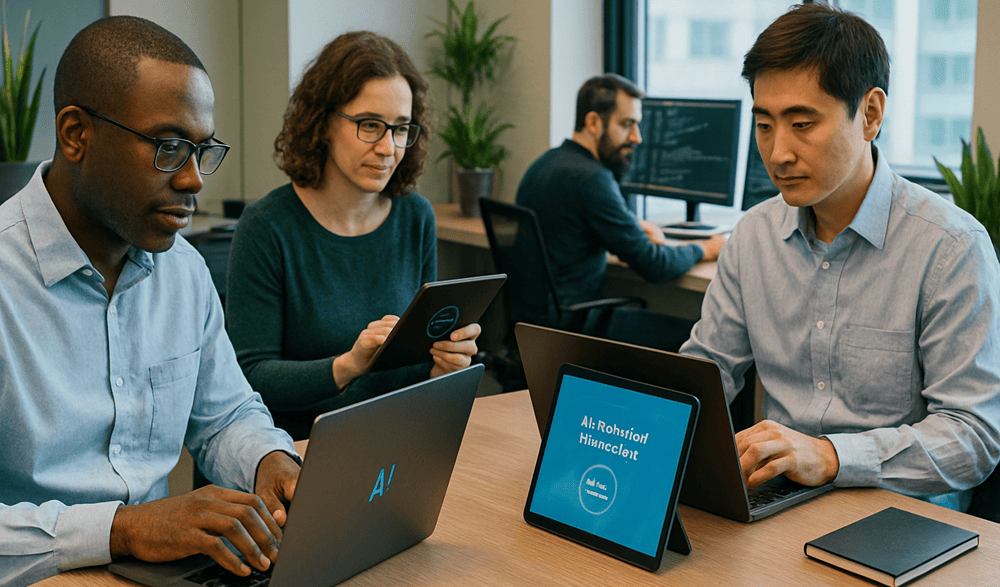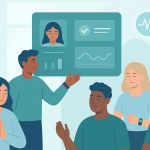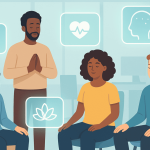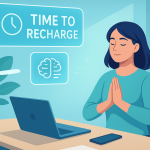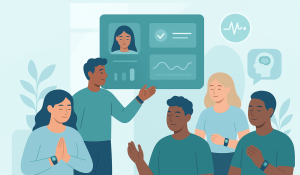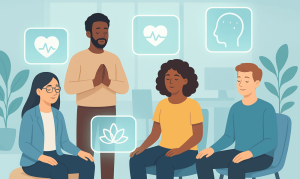In today’s hyper-connected world, IT professionals are the backbone of almost every organization. They keep networks running, data secure, and business systems alive around the clock. But this constant pressure comes at a cost mental fatigue, stress, and, in many cases, burnout.
As workloads intensify, more leaders are turning to AI for IT professional burnout prevention. AI-driven tools are offering a lifeline delivering personalized, real-time support to help tech teams stay healthy, engaged, and productive.
Understanding the Burnout Crisis in IT
Burnout among IT staff isn’t just a “too much work” issue. It’s a mix of long hours, high responsibility, shifting priorities, and the stress of solving mission-critical problems under tight deadlines.
Common burnout triggers in IT roles include:
- 24/7 on-call schedules that disrupt personal life.
- Rapid changes in technology demanding constant upskilling.
- Security incidents requiring intense problem-solving under pressure.
- Complex projects with unrealistic delivery expectations.
According to global workplace surveys, over 60% of IT professionals report feeling stressed “often” or “very often,” and nearly half have considered leaving their role due to mental health concerns.
How AI is Changing the Game
Artificial intelligence isn’t here to replace IT professionals — it’s here to support them. With AI mental health support, IT teams can access instant resources that fit into their workflow. These tools aren’t just reactive; they’re proactive, spotting early signs of stress before they spiral into full burnout.
Key AI-powered capabilities include:
- Mood and Stress Tracking – Analyzing patterns in work hours, communications, or biometric data to identify red flags.
- On-Demand Coping Strategies – Offering guided breathing exercises, mindfulness prompts, or short recovery breaks.
- Workload Optimization – Identifying patterns of overload and suggesting redistribution of tasks.
- Personalized Insights – Using data to suggest long-term strategies for sustainable work habits.
From Awareness to Action: AI Burnout Prevention
While awareness is the first step, action is what changes outcomes. AI burnout prevention works because it combines monitoring with actionable interventions.
For example, if an IT project manager is logging excessive hours on system upgrades, the AI platform might:
- Suggest quick breaks at regular intervals.
- Recommend specific relaxation exercises based on previous positive responses.
- Alert HR or leadership if stress indicators remain high for an extended period.
This isn’t micromanaging — it’s compassionate technology. It’s about giving people the tools to manage themselves better, not adding another layer of oversight.
The Workplace Stress Equation
The modern tech workplace can be rewarding, but unmanaged stress chips away at engagement and creativity. That’s where workplace stress management AI becomes an operational advantage.
Instead of generic wellness programs that fail to engage, AI delivers tailored interventions, making the experience relevant to each team member.
| Stress Trigger | AI Support Example | Impact |
| Overnight system outage | AI recommends micro-rest plan and guided recovery session | Faster recovery, reduced fatigue |
| Tight project deadline | Task prioritization suggestions | Reduced cognitive overload |
| Persistent high stress | Suggests mindfulness or short physical activity | Gradual stress reduction |
Linking Lessons Across Industries
Interestingly, lessons from other sectors can inspire better IT workplace wellness. Just as Mental health support for miners addresses high-risk, high-stress jobs with digital tools, AI for IT teams can adapt similar strategies. Mining and IT may seem worlds apart, but both involve intense focus, safety implications, and heavy cognitive demands.
Similarly, AI-powered CBT has been effective in multiple fields by blending evidence-based therapy methods with accessible, on-demand support. IT workers can benefit from these same approaches when dealing with chronic stress or anxiety.
Building AI into the IT Workday
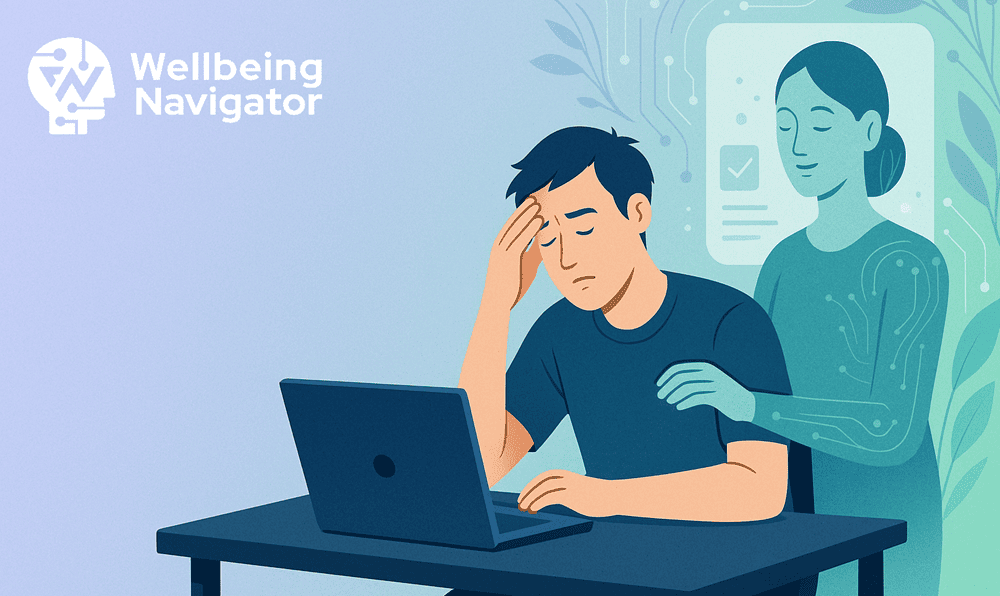
To be effective, AI wellness tools must feel like part of the workflow — not an extra task. Here’s how organizations can integrate them seamlessly:
- Embed in Communication Platforms
Place AI wellness prompts inside Slack, Teams, or Jira so help is one click away. - Encourage Micro-Use
Promote short, two-minute sessions rather than hour-long trainings. - Protect Privacy
Assure employees that data collected for wellness is not used for performance reviews. - Lead by Example
When senior IT leaders use the tools, adoption rates soar.
The ROI of AI for Employee Wellbeing
Executives often ask about ROI and rightly so. The benefits of AI for employee performance aren’t just “soft.” They show up in tangible results:
- Lower absenteeism rates.
- Higher project delivery success due to healthier, more focused staff.
- Reduced turnover — saving costs of recruiting and training.
When staff are mentally fit, productivity rises. And with AI stress reduction tools readily available, small interventions can have big cumulative impacts.
A Broader Wellness Ecosystem
AI works best when part of a bigger wellness strategy. For example:
- A cybersecurity analyst might use best AI meditation tools to stay calm during prolonged threat monitoring.
- A helpdesk engineer could benefit from lessons learned in reducing cell phone addiction with AI to improve focus at work.
- System administrators under tight migration deadlines could borrow ideas from digital mindfulness for construction workers to stay grounded under pressure.
These cross-industry insights prove that AI wellness is adaptable, scalable, and effective in multiple high-demand environments.
Real-World Scenario
Picture an IT security lead managing a ransomware incident. The stakes are high, the hours are long, and the mental load is crushing. In moments like these, an AI wellness assistant can:
- Recognize elevated stress markers through typing speed and tone in messages.
- Offer a quick guided visualization to restore focus.
- Recommend stepping away for 90 seconds to reset, even in the middle of crisis management.
Over weeks and months, these micro-interventions build resilience, helping prevent long-term burnout.
Looking Ahead: AI Productivity and Wellness
The next evolution in AI productivity and wellness will merge performance insights with mental wellbeing tools. This means:
- Project timelines that adapt to staff wellness indicators.
- Automated scheduling that factors in mental recovery needs.
- Team analytics that balance output with sustainable workloads.
By treating wellness as a performance metric not just a personal responsibility, companies can create cultures where IT professionals thrive.
Final Takeaway
Burnout in IT is real, costly, and preventable. By adopting AI for IT professional burnout strategies, organizations can offer targeted, scalable, and private support that genuinely improves quality of life for their tech teams.
Leaders who embrace these tools not only protect their staff but also future-proof their business against productivity losses and high turnover. The message is clear: AI isn’t just smart technology it’s a partner in building healthier, more resilient IT workplaces.

